Pork Curry From The Box? You Bet!
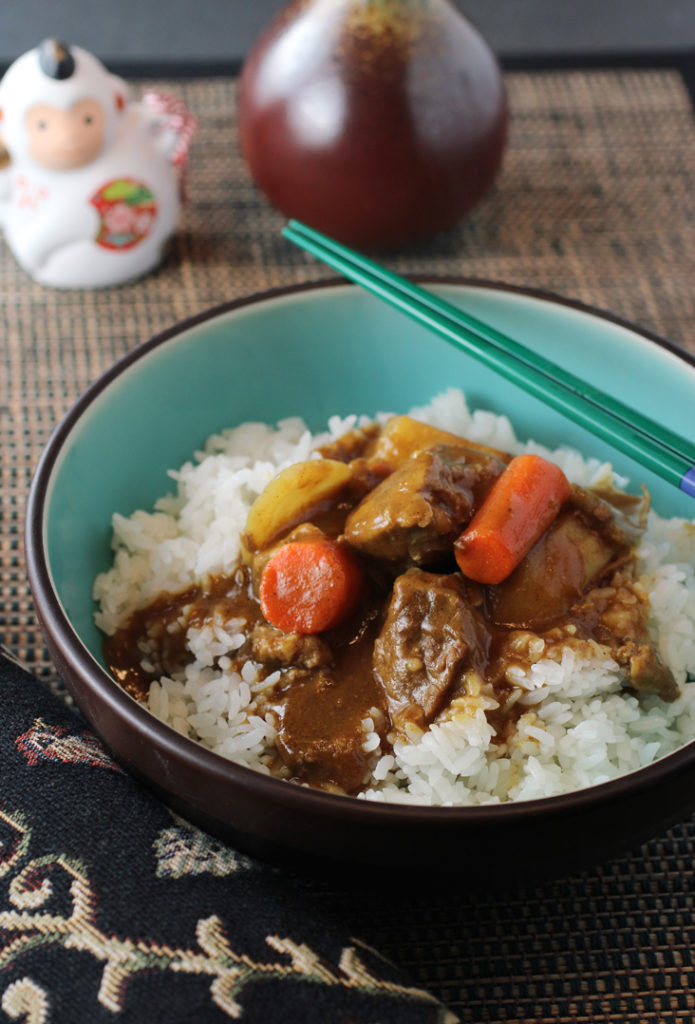
This post marks a first for me.
It’s the first one that spotlights a recipe that wasn’t tested by me — but instead by my husband.
Because “Pork Curry From the Box” has special meaning for him.
Like so many of us of ethnic heritages, he grew up doing his darndest to disavow his. Wanting to “fit in” and be more “American” as a kid, he turned his back on the traditional Japanese foods his mother would cook. For a spell, he simply wouldn’t eat much of it. Not surprisingly, he never learned to cook any of it, either.
But now, like so many of us, he has deep regrets about that. He misses the aromas and tastes of home-cooked Japanese food. He longs for certain dishes his Mom would make, especially now that she’s no longer alive to cook them. Older and wiser, he now appreciates them in a way that he couldn’t before.
So when a review copy of “The Gaijin Cookbook: Japanese Recipes from a Chef, Father, Eater, and Lifelong Outsider” (Houghton Mifflin Harcourt, 2019) landed in my mailbox, he grabbed it before I could, and started leafing through it with an interest and intention I hadn’t seen before.
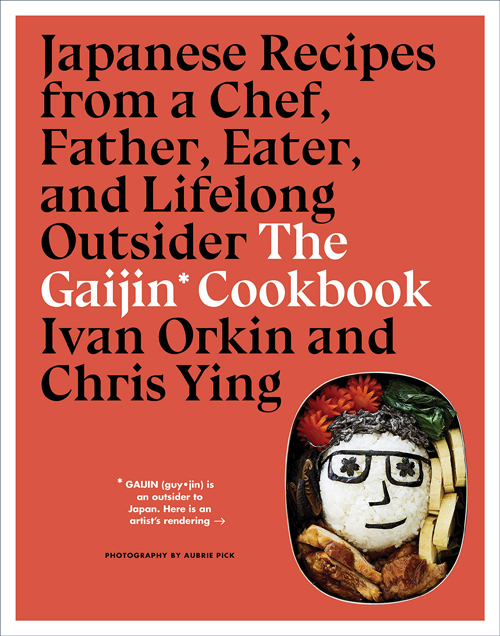
The book is by Ivan Orkin, chef-owner of New York’s Ivan Ramen and Ivan Ramen Slurp Shop; and Chris Ying, co-founder of the revered and now-defunct Lucky Peach.
“Gaijin” is the term for “an outsider ” or “foreigner” in Japan.” It’s what Orkin definitely was when he first went to Japan after graduating from college to teach English. He fell in love with the country, returning after graduating from the Culinary Institute of America, to open — of all things — his own ramen shop. That might have seemed presumptuous on his part as a foreigner. But he turned even the most hardened skeptics, going on to create one of the most revered ramen shops in Tokyo. In 2012, he returned to the United States to open restaurants in New York.
Fluent in Japanese and educated in the finer points of the cuisine, he shares in this book the recipes that he cooks at home for his wife and kids. That means food that isn’t precious and unattainable, but accessible, comforting, and even playful. That means food such as “Mentaiko Spaghetti,” “Pork and Tofu Meatballs with Buttermilk Sauce,” “Bagels with Japanese-ish Fixings,” and “Tofu Coney Island” (yes, garnished with yellow ballpark mustard).
Home-cooks often needlessly get guilt-tripped into thinking they should try to make everything from scratch. Orkin is here to tell you that’s nonsense, especially when it comes to Japanese packaged foods, which are most excellent. Case in point, he writes in the book, “Boxed Japanese curry is magnificent, and I will go to the mat with anyone who argues otherwise.”
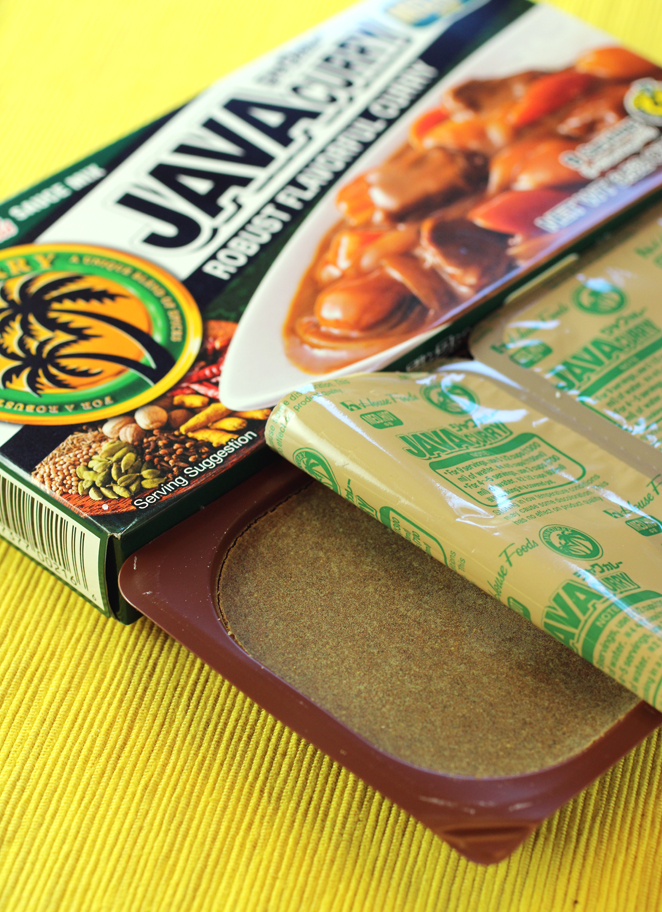
Boxed curry is precisely what my husband’s mother used to use. So this recipe definitely grabbed his heart strings. You can find many brands of boxed curry in any Japanese market. The solid roux comes in a segmented bar, almost like a big chocolate bar. The minute you open the box, an assertive curry fragrance lets loose. If you have kids, you will probably want to choose the “mild” version. If you like a big hit of spice, go for “hot.” My husband prefers the “medium.”
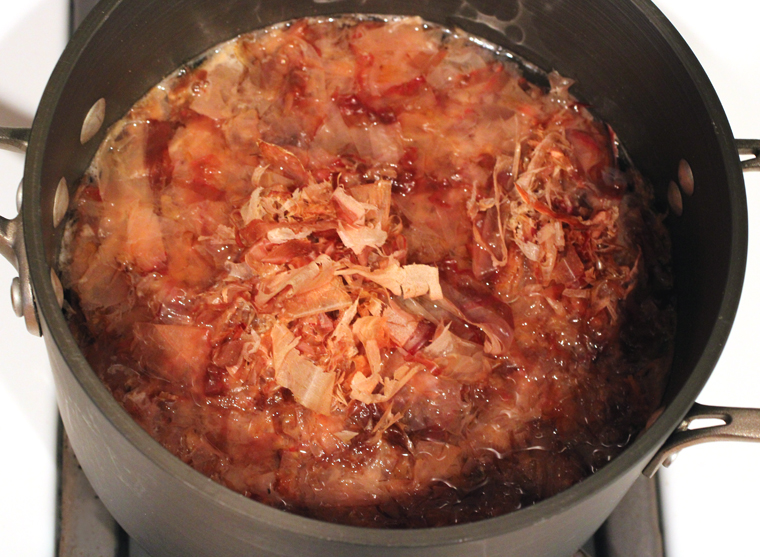
What Orkin does first is to make a sizeable batch of braised pork for the curry. It’s enough, in fact, to feed 12. Because pork curry is a staple in his household, he can then freeze two batches to enjoy later. It’s a godsend to have this treasure trove waiting in the wings, too.
Once you have those tender chunks of pork and its braising liquid, they get fortified with carrots, onions, and potatoes. My husband found that the veggies took longer to cook than the recipe stated, so we made that change to the recipe.
The curry blocks get dissolved into the liquid and create a very thick, rich gravy. Orkin adds a splash of milk and honey — something my husband’s mother never did –but which makes the gravy even more velvety and adds a little more appealing sweetness.
When you’re jonesing for this dish again — and you will — defrost another portion of the pork and braising liquid. Heat on the stovetop. Then, before adding in the potatoes, carrots and onions to cook, first remove the chunks of meat and reserve. We found that the meat will break down considerably if you keep the pork in the liquid while cooking the vegetables. So, it’s best to remove the meat, then add it back in once the vegetables are cooked and the curry blocks have dissolved.
This is a stick-to-your-ribs kind of dish — far thicker and sweeter than Indian curries. Serve it with a big mound of fluffy rice, a must-have accompaniment for all that cumin-scented, earthy-sweet sauce.
This wonderfully rustic dish is like a loving embrace that warms you through and through. It’s no wonder that it’s so craveable at any age or stage in life.
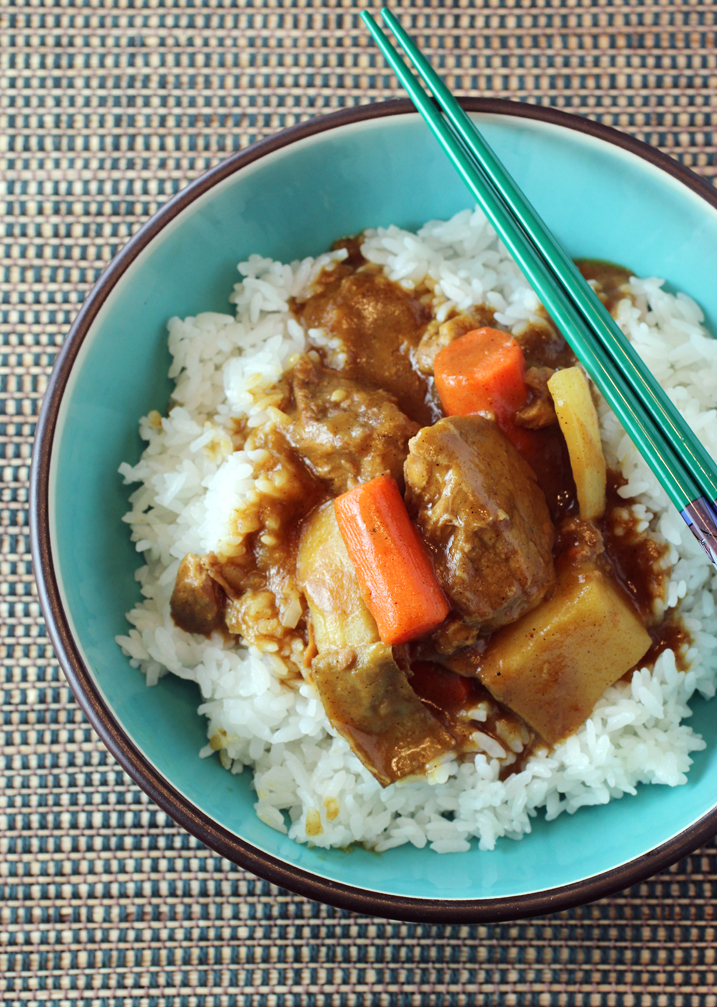
Pork Curry From the Box
(Serves 4)
For vegetables:
1 tablespoon vegetable oil
2 medium carrots, peeled and cut into 1-inch pieces
1 large russet potato or Japanese sweet potato, cut into large chunks
1 onion, cut into large chunks
For meat and curry:
1/3 recipe Braised Pork (see recipe below), with the braising liquid, thawed if frozen
one 8-ounce box Japanese curry blocks
1/2 cup whole milk (optional)
2 tablespoons honey (optional)
For serving:
Steamed rice
Fukujin pickles or pickled sushi ginger (available at Japanese markets)
Heat a Dutch oven or other large heavy-bottomed pot over medium-high heat, then coat with the vegetable oil. Add the carrots and potato, and cook for about 8 minutes, stirring regularly. Add the onion and cook for 2 to 4 more minutes to remove some of the rawness.
Use a slotted spoon to scoop the pork chunks into the pot. Now measure how much braising liquid you have and add enough water to total 5 cups of liquid, then add to the pot. Bring to a simmer, lower the heat to medium, and cook until the carrots and potato are nearly tender, 3 to 5 minutes.
Break up the curry blocks and stir them into the pot. (It’ll take some diligence to make sure they’re all completely dissolved.) If you like your curry a little richer/sweeter, stir in the milk and honey. Simmer for 5 minutes, then serve over steamed rice with little piles of pickles on the side.
Braised Pork
(Makes enough for 3 batches of curry)
One 5-pound boneless pork shoulder, cut into 2-inch chunks
1 tablespoon plus 1 teaspoon kosher salt
1 1/2 teaspoons freshly ground black pepper
2 tablespoons vegetable oil
8 cups dashi (see recipe below), chicken stock, water, or a combination
Preheat the oven to 350 degrees.
Season the pork with the salt and pepper. Heat a Dutch oven or other large heavy-bottom pot over medium-high heat, then coat with the vegetable oil. Working in batches, sear the pork pieces on all sides. Don’t crowd the pot, or you’ll end up steaming rather than searing the meat. All told, you should spend a good 15 minutes or so, making sure all the meat gets some good color and removing the pieces to a bowl or plate as they brown. Once all the meat is browned, pour off the fat and return the meat to the pot. Add the dashi, chicken stock, or water and bring to a simmer, then cover the pot and slide it into the oven. Cook for about 2 hours, or until the meat is fork-tender.
Reserve one-third of the meat and broth for your first batch of curry. Let the rest of the pork and broth cool to room temperature before portioning it into two plastic containers and freezing it for future curry dinners.
Dashi
(Makes about 7 cups)
One 5-by-10-inch sheet kombu
4 cups tightly packed katsuobushi (bonito flakes)
Bring 8 cups water to a bare simmer in a large saucepan, then shut off the heat and add the kombu. Let the seaweed sit for 5 minutes, then add the katsuobushi, cover the pan, and allow to soak for 15 more minutes.
Strain the broth through a fine-mesh strainer and let cool. Use immediately, or pack up and store. The dashi will keep for 2 days covered in the fridge or for a couple months if you freeze it into ice cubes and store them in a zip-top bag with the air squeezed out.
Adapted from “The Gaijin Cookbook” by Ivan Orkin and Chris Ying
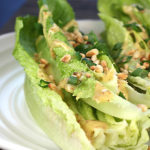
To Complete With Your Curry Dinner: Romaine Hearts with Miso-Mustard Dressing
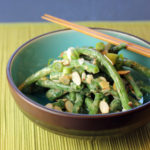
And: Green Beans with Miso and Almonds
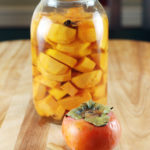
And: Pickled Persimmons
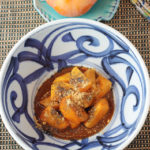
And: Persimmons with Kinako Dressing and Black Salt

And: Raspberry-Mochi Butter Cake with Matcha Glaze
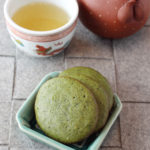
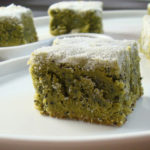
And: Green Tea Shortbread with Poppy Seeds

Plus: Kinako and Black Sesame Cupcakes

And: Kinako Brown Butter Shortbread

And: Kinako Ice Cream

I made Japanese Curry (with chicken) last night for supper! It is such a comfort food and I always have a few curry boxes on hand. When I visited my Japanese exchange family some years ago, Otosan let me help in the kitchen and he teasingly said time for the secret ingredient, and pulled out a box of S&B curry roux 🙂 I think of them every time I make it. I’ll have to look into the cookbook, thanks for the heads up.
Laura: Chicken is a great substitute! Firm tofu would also work well. That is so funny that Otosan’s secret weapon is the box of S&B curry roux. It really is great stuff, and such a lifesaver to have on hand. 😉